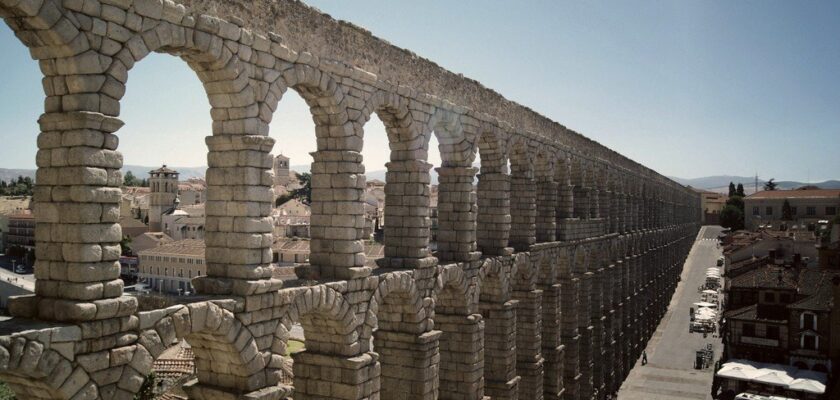Aqueduct of Segovia
Aqueduct of Segovia is an ancient engineering object, a national treasure of Spain. Historians attribute the date of construction of the unique water supply system to the I century AD. The amazing structure impresses with its slender outlines and calibrated proportions. The majestic arches of the aqueduct seem light and airy. They are built without the use of fasteners or mortar, 20400 blocks of granite are firmly held under their own weight.
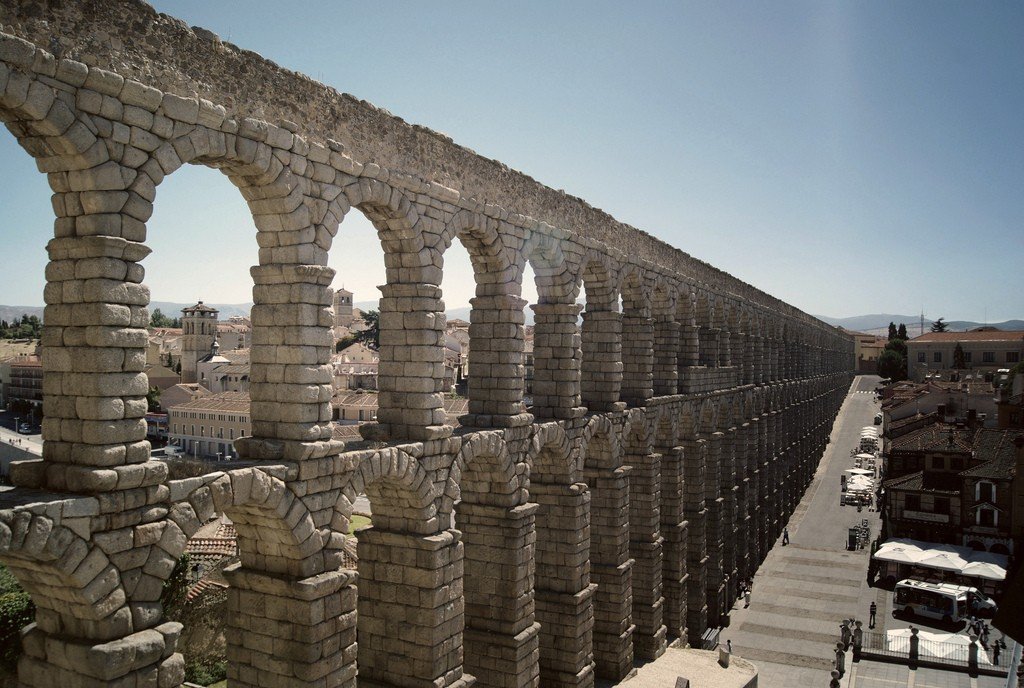
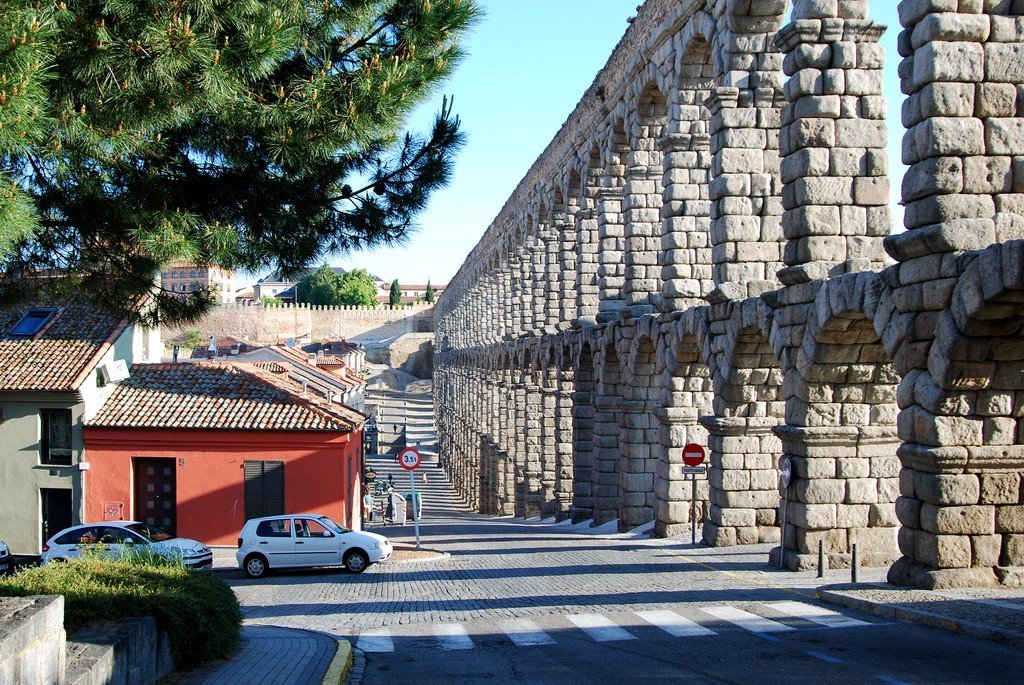
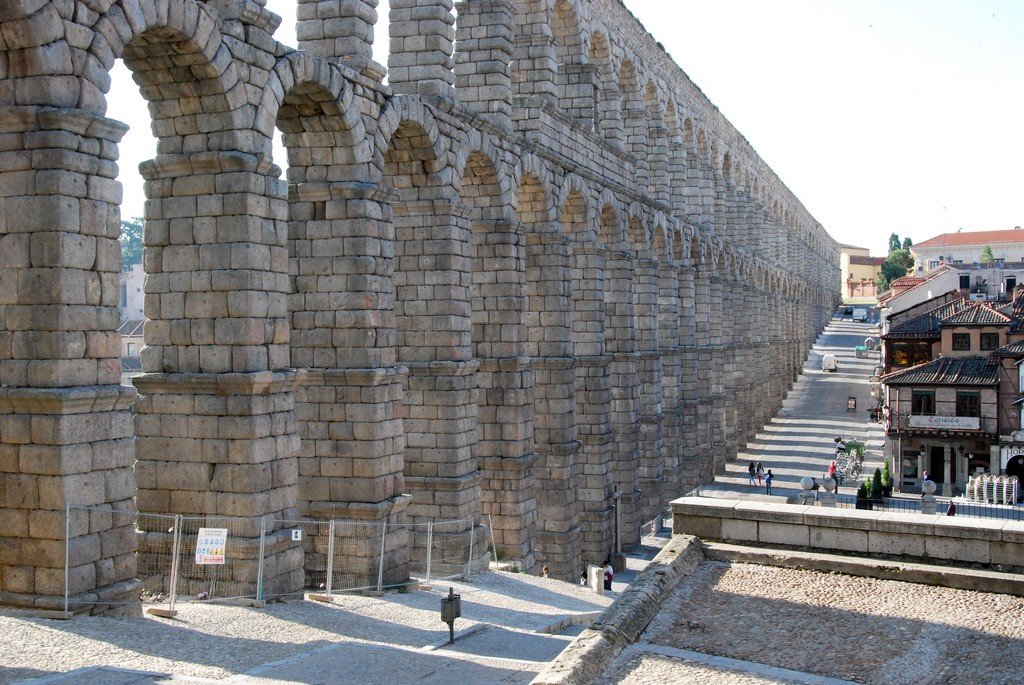
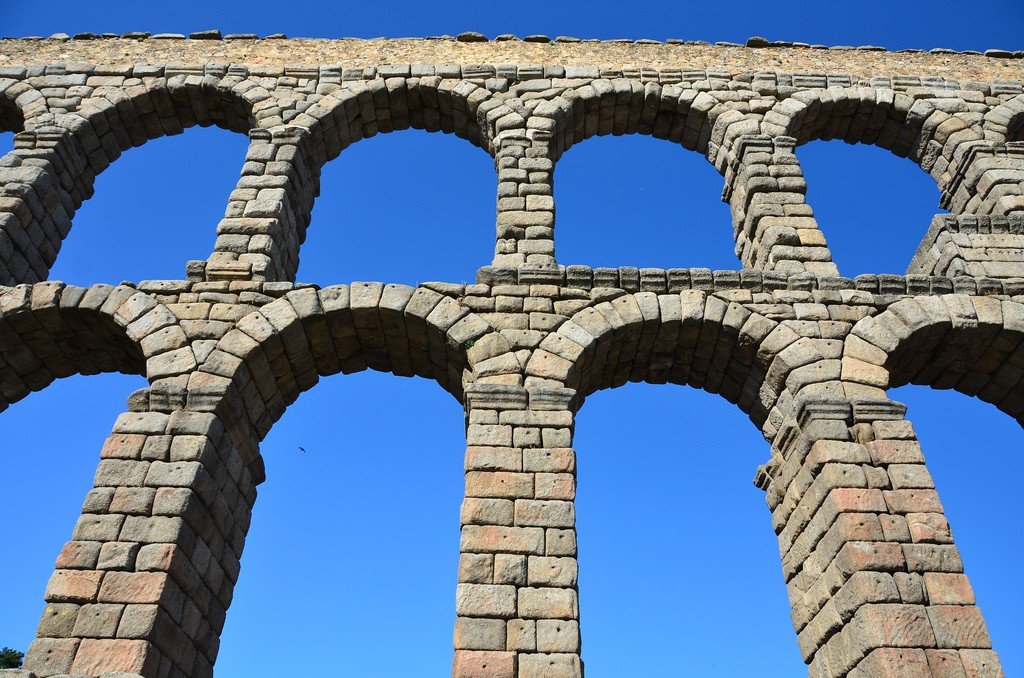
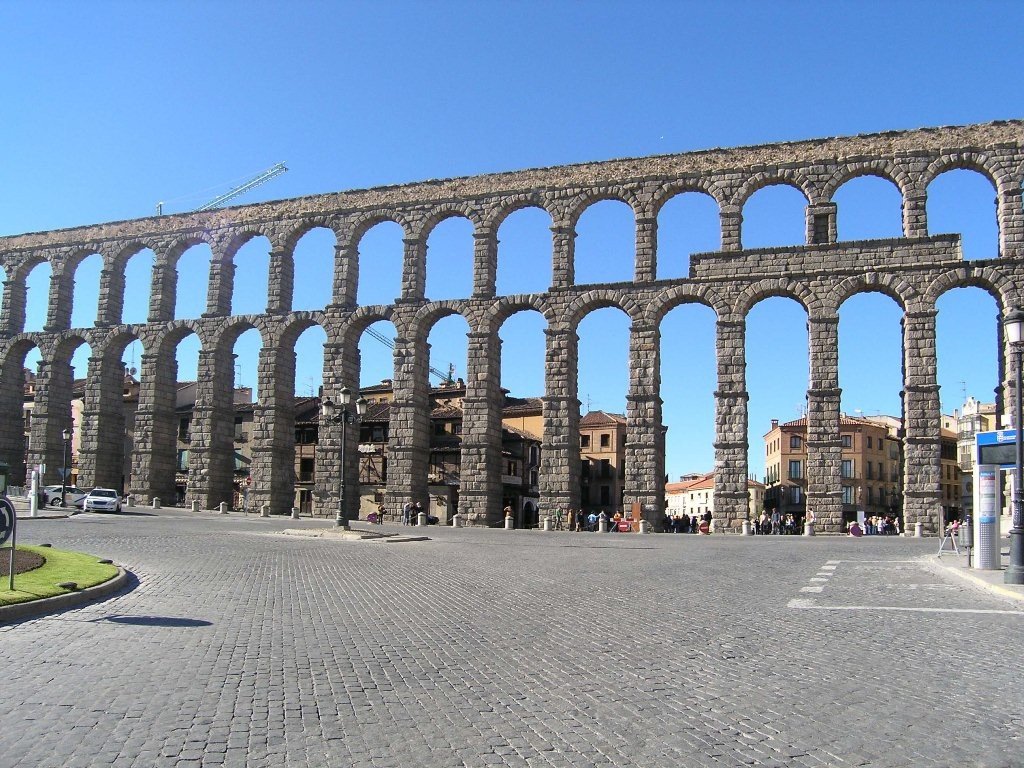
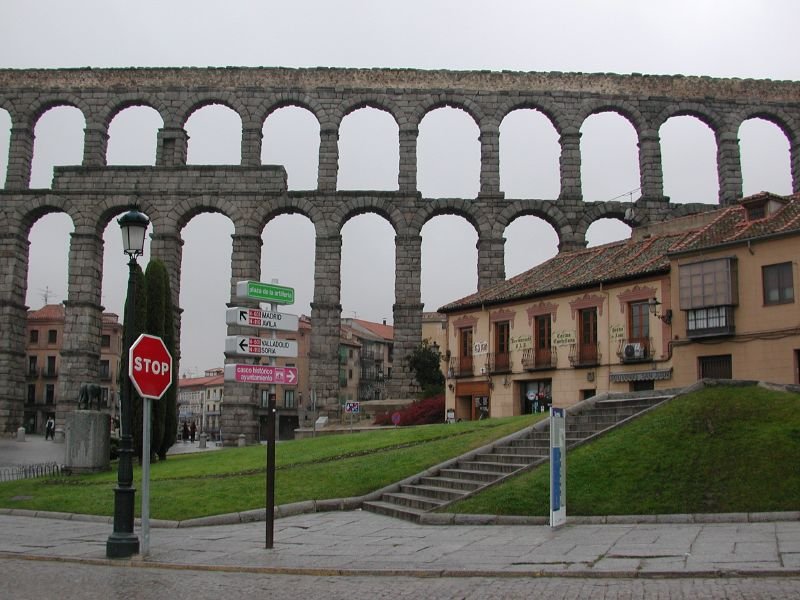
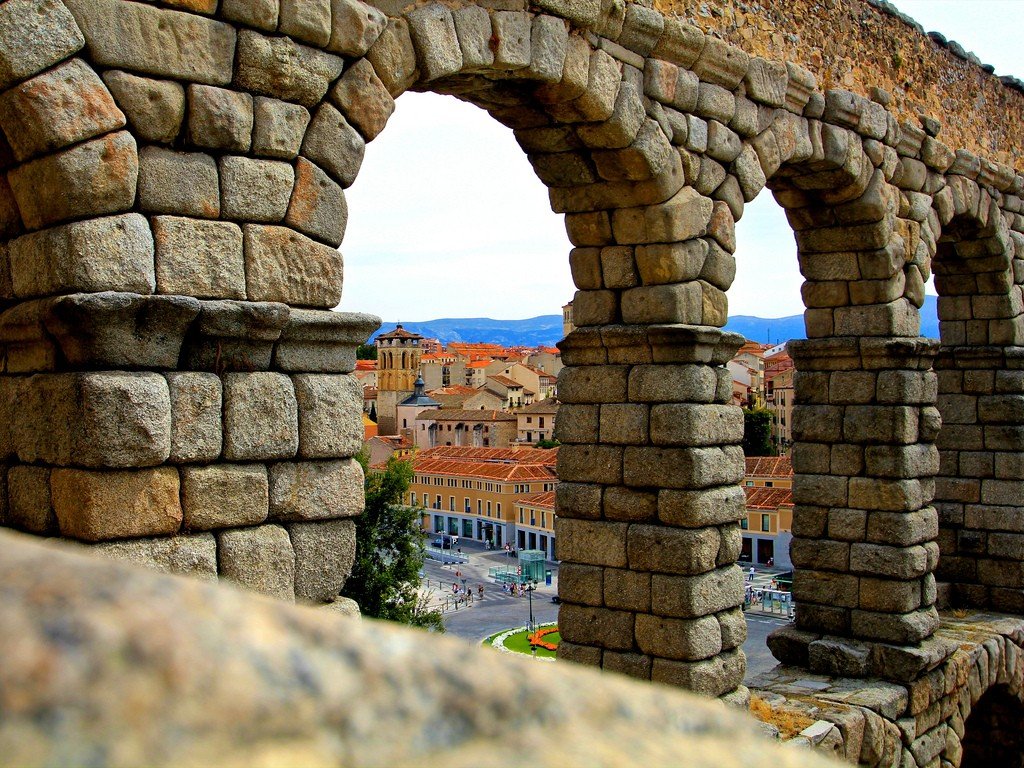
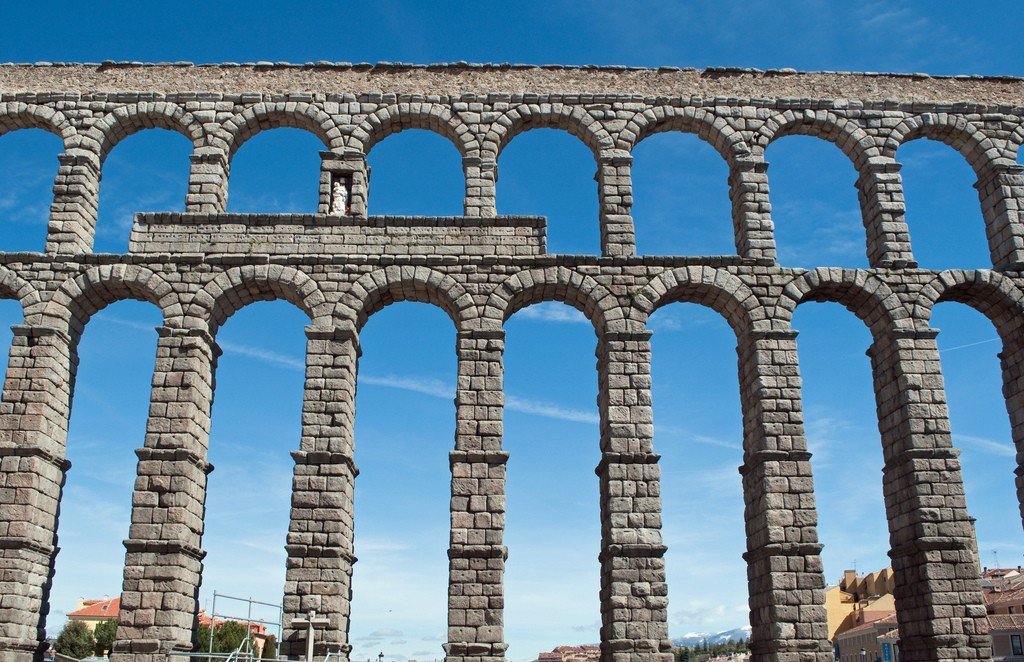
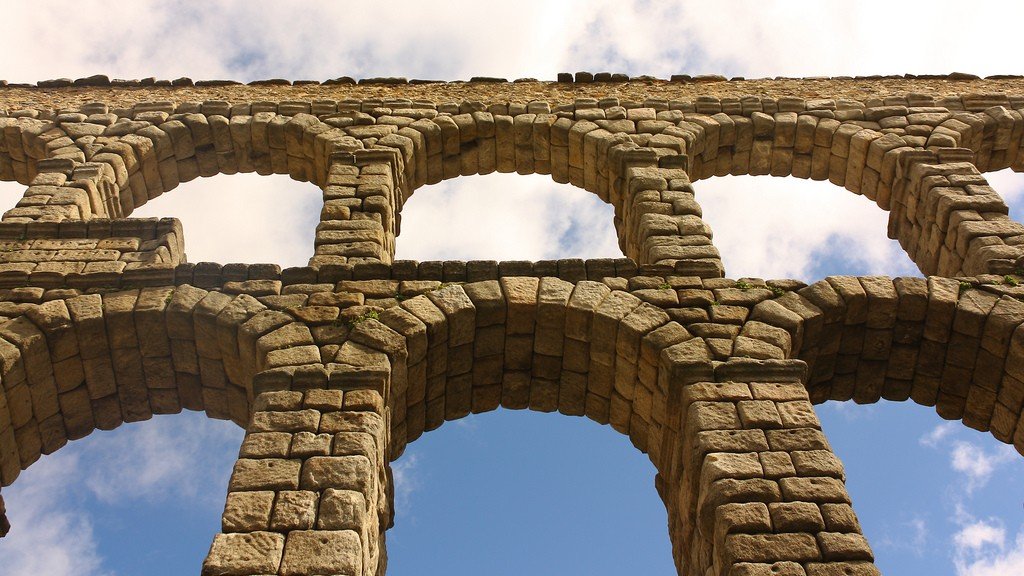
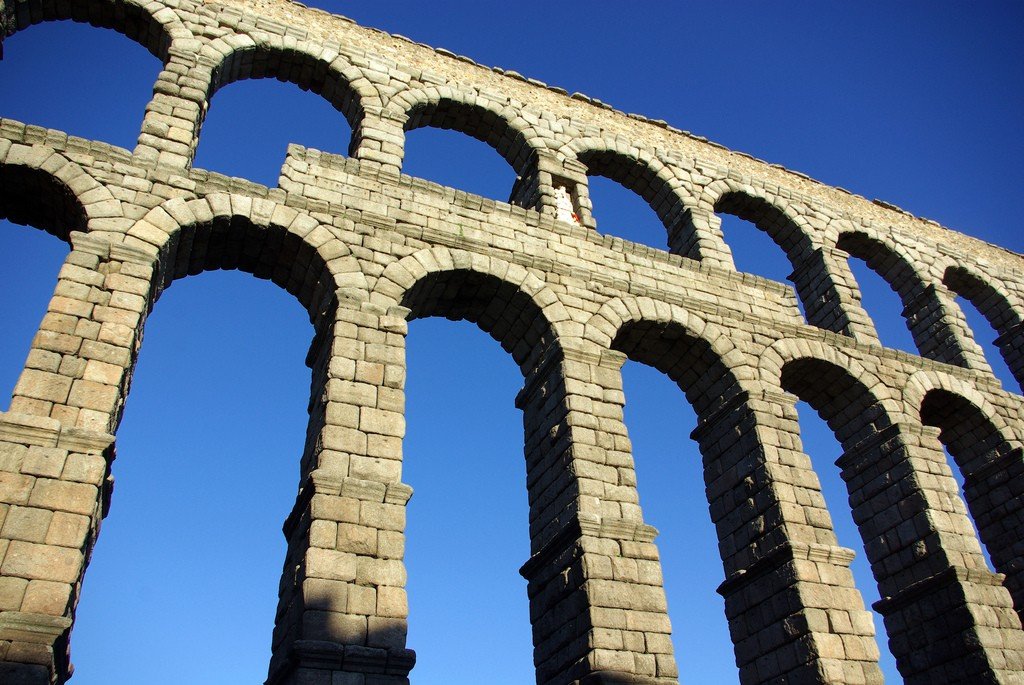
General Information
For many centuries, the aqueduct in Segovia functioned smoothly and provided water to the settlement. This is likely to have contributed to the excellent preservation of this hydraulic facility.
The aqueduct has two two main structures.
The aqueduct has two rows of arches that are located on poles. In total, the structure consists of 166 arches, 75 of which are directed towards Plaza Diaz Sanz, followed by simple arches, and after them there are 47 double arches. The length of the aqueduct bridge is 818 meters.
.This bridge is the longest of all similar structures built by the Romans in Europe (and they were created about eight hundred). The aqueduct was built according to the project developed by the Roman scientist-mechanic Vitruvius for water supply systems, set out in his treatise “Architecture”.
.
Seventeen kilometers from the city is the mountainous Fuente Fria River. The water from it flowed into the El Caseron reservoir, and from there to the Casa de Aguas water tower. From the tower, the water flowed down a slight incline to the center of the city, passing through a stone chute over the streets. The water flow reached the Alcázar fortress and then, at the Diaz Sanz square, the aqueduct turned sharply towards Plaza Azoguejo. That’s where the two-tiered bridge stood.
.In 1072, several arches of the bridge were destroyed in an attack by the Moors. In the 15th century, elements of the aqueduct were rebuilt and replaced with new pointed structures. The reconstruction was carried out by Don Pedro Messa, Prior of the Monastery del Parral.
.
During Roman times, the aqueduct in Segovia was decorated with bronze letters on the upper tiers, signifying the date as well as the name of the builder, but over time they disappeared. It is known that the two upper niches on either side of the aqueduct formerly contained bronze statues. One of the sculptures depicted Heracles the Egyptian, according to legend, he is considered to be the founder of the city. The other two niches had statues of St. Esteban and the Virgin Fuensizla (patroness of the city)..In recent times, the aqueduct has deteriorated greatly, with erosion of the granite stones. This is generally attributed to environmental pollution. Until 1992, cars could still pass under the vaults of the ancient structure. Strange as it may seem, the vibrations caused by traffic did not affect the majestic aqueduct at all due to the huge mass of stones and the inertia of the structure. During the restoration since 1997, the area where the aqueduct is located became a pedestrian zone.
.
For several years now, this ancient architectural monument has been the site of various festive events. On December 4 every year, the city celebrates the day of St. Barbara, who is considered the patron saint of artillery. On this holiday, representatives of the church and cadets next to the aqueduct carry a platform with the face of the Virgin Mary. The arches on its two floors are decorated in a special style, standing out against the sky.
. The Segovia Aqueduct is considered a symbol of the city – it is depicted on the city’s coat of arms. Since 1884, it has been declared a national monument of the Spanish Kingdom..
The Devil’s Work
There is an ancient legend in Segovia. Once upon a time there lived in the city a poor girl who served a rich lord and carried buckets of water from the mountain river every day. Exhausted by her hard work, the maid made a desperate plea to the devil himself. She offered him her soul in exchange for relief from her burdens. The girl made only one condition – everything had to happen before dawn.
. And now, before her eyes, a colossal aqueduct began to build itself. The astonished girl repented and prayed to the Holy Virgin, crying for help. The sun rose, but the last stone was not laid in the aqueduct. The girl’s soul was saved..The bridge of the aqueduct is indeed missing one stone – otherwise this ancient structure is considered flawless. Until recently it was in operation and supplied the city with water. In Roman times, the arches of the upper tier had niches with bronze images of the patrons of the city: Hercules of Egypt, St. Virgin Fuensisila, and St. Esteban. The last two figures still exist today – they were recreated when the aqueduct was repaired in the 16th century.
.
How to get there
Getting to the aqueduct in Segovia of the majestic structure can be done in different ways. By car you should take highway 6 through the tunnels of the Sierra de Guadarrama. By bus from Madrid to the city of Segovia can be reached by getting off at the station Príncipe Pio. It is also possible to get there by high-speed train from Madrid, which stops at Guiomar station (it is 4 km from the center of Segovia).
.If in Italy you should definitely see the Colosseum, then the aqueduct can be called the calling card of its western neighbor. Spain has many amazing things to show you, but this magnificent hydraulic structure, which is over 2000 years old, is particularly striking. It has survived for so long thanks to the amazingly clever calculations of Roman architects and builders. Let’s hope it can stand for at least another 1,000 years.
.